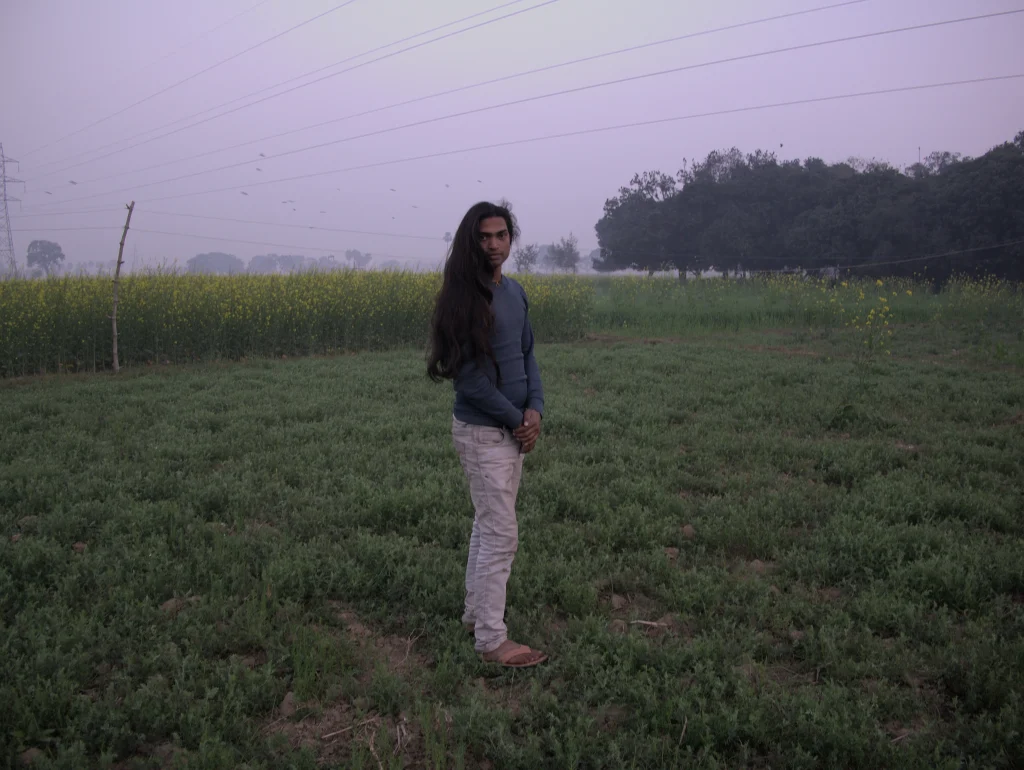An Interview with Naach Artist

(Launda) Naach, as an art form, involves men impersonating women, leading to cross dressing and fluidity in gender behaviour. Although the tradition began as a sort of entertainment, performed on occasions like marriage and childbirth, it was popularised by Bhikhari Thakur in the 20th century who brought this historical tradition into the realm of theatre and performance to comment on the social and moral fabric of rural society and pressing issues like migration. Thakur’s play called Bidesiya was first performed circa 1917.
However, in recent years, (Launda) Naach has also been seen as a ‘cheap’ form of entertainment, where the practitioners of this art form who are mainly male, are seen as effeminate and of low moral character. Movies like Gangs of Wasseypur have reinforced the stereotype where men who are sleazy and of licentious nature use (Launda) Naach to entertain themselves.
Such stereotyping is both the cause and result of declining patronage for these artists. According to an estimate given by Raju Ranjan, a singer-performer and cultural activist from the region, there are around 50-60 practising Naach artists in the Bhojpur district of Bihar. Having grown up watching renditions of Naach performances, where the sheer energy of the performers captivated his artistic soul, Ranjan claims “They can be as good as shashtriya kalakaars (classical artists) if they are supported and patronised by the government and private organisations.”
Commanded by a desire to work with the Naach artists’ community, Ranjan spoke to Sipahi Lathore, a second generation artist in Kanela, a village located in Bhojpur district of Bihar. Without any support from either the government or civil society, artists like Sipahi have to migrate to other cities for work; in this case, Pune for seasonal work.
In their conversation, interspersed with humour and disillusionment, discussions range from family relations to ordinary struggles, personal achievements and workplace harassment in their profession—and most importantly, Sipahi’s devotion and care towards his long, cascading hair!

Credits:
Research and Direction: Raju Ranjan
Edit: Piyush Kashyap
Logistics, Equipment and Studio by zeropowercut
Audio Recording and Editing: Piyush Kashyap
Produced by Poorvanchal aur Palayan and zeropowercut
Also read: Inhabiting Memory
About the contributors
zeropowercut creates inter(caste)actions of research and production, to investigate the role of art, aesthetics, and language in how caste is coded in reality. We are based out of a small workshop in the old part of Patna, Bihar, India.
They are on instagram: @zeropowercut.work
Piyush Kashyap is an artist, writer, and filmmaker, based in Bihar, India. Through materials, image, text, history, and philosophy, Kashyap’s independent research on caste analyses how the caste-sanctioned categorisation of workers as ‘Sudra’ (a term which means: menial and unknowledgeable) dissociates Knowledge and Work, and actually, sudra-fies not just the people, but a whole cultural notion of Intelligence.
Raju Ranjan is a jangayek—a (public) singer-performer and theatre artist. He hails from a community of landless agricultural labourers from Arrah, Bihar. He has a diploma in Theatre from the Bhopal School of Drama, and has been active as a theatre artist and cultural activist from a very young age.
He is on Instagram: @rajukumarranjan30
